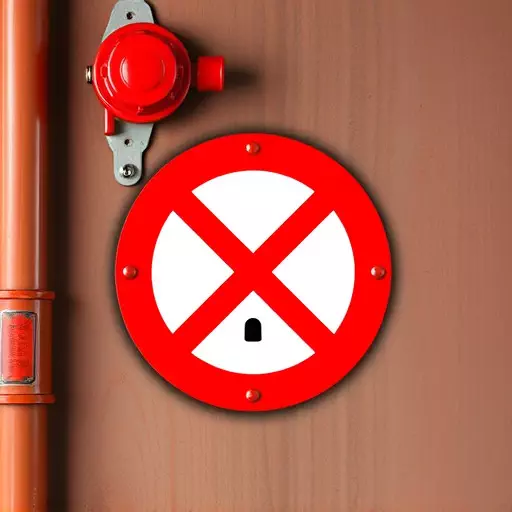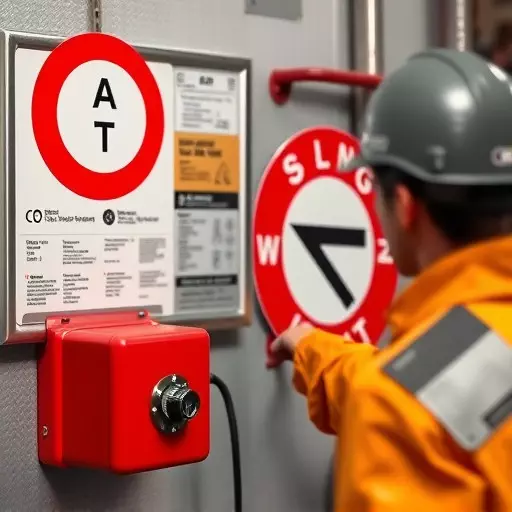Effective lockout/tagout (L/T) practices, guided by OSHA's regulatory framework, are crucial for worker safety during maintenance. Compliance training equips employees with knowledge on energy control, lock/tag types, and hazard recognition, fostering a safety-first culture. Advanced training techniques like interactive simulations and virtual reality enhance understanding and prepare for real-world challenges, improving overall L/T compliance. Digital technologies, including IoT devices and simulation software, revolutionize L/T safety by enabling virtual practice, real-time monitoring, and automatic locking mechanisms, streamlining training and reducing human error.
The future of workplace safety is shaped by continuous innovation and adaptation. As industries evolve, so do the risks, particularly in sectors heavily reliant on energy controls. This article explores the upcoming trends in lockout/tagout (L/T) safety, focusing on advanced training techniques to bolster OSHA compliance in energy control procedures. By integrating emerging technologies, organizations can revolutionize L/T protocols, ensuring a safer and more efficient future for all workers. Discover how these developments aim to mitigate risks and enhance workplace protection.
- Understanding Lockout/Tagout: The Foundation for Future Safety Practices
- Advanced Training Techniques to Enhance OSHA Compliance in Energy Control Procedures
- Emerging Technologies and Their Role in Revolutionizing Lockout Tagout Safety Protocols
Understanding Lockout/Tagout: The Foundation for Future Safety Practices
Understanding Lockout/Tagout is paramount in shaping future safety practices. This critical process involves isolating energy sources to prevent accidental activation during maintenance or repair, ensuring worker safety across various industries. Compliance with OSHA’s lockout tagout standards is not just a regulatory requirement but a foundational step towards reducing workplace accidents and injuries.
Effective lockout tagout compliance training equips employees with the knowledge and skills needed to implement these safety procedures correctly. It involves learning energy control procedures, understanding different types of locks and tags, and recognizing potential hazards associated with various energy sources. This training is crucial in fostering a culture of safety where workers proactively protect themselves and their colleagues, ultimately leading to safer work environments and reduced risk of workplace incidents.
Advanced Training Techniques to Enhance OSHA Compliance in Energy Control Procedures
Advanced Training Techniques are revolutionizing OSHA Compliance in Energy Control Procedures. With evolving industry standards and an emphasis on safety, companies are adopting innovative methods to educate their workers about lockout/tagout practices. Interactive simulations, virtual reality training, and dynamic scenarios are among the game-changers. These techniques not only ensure deeper understanding but also prepare employees for real-world challenges, enhancing overall lockout tagout compliance.
By incorporating these advanced training tools, organizations can foster a culture of safety consciousness. Such immersive experiences allow trainees to apply OSHA lockout tagout standards in diverse, realistic contexts. This proactive approach not only meets regulatory requirements but also goes beyond, fostering an environment where safety is prioritized at every energy control procedure.
Emerging Technologies and Their Role in Revolutionizing Lockout Tagout Safety Protocols
The future of lockout/tagout safety is being reshaped by emerging technologies, offering new opportunities to enhance workplace protection and streamline compliance with OSHA standards. Digital solutions are revolutionizing traditional methods, making lockout tagout compliance training more interactive and accessible than ever before. These innovations include advanced simulation software that allows employees to practice energy control procedures in virtual environments, ensuring they’re well-prepared for real-world scenarios.
Moreover, the integration of Internet of Things (IoT) devices is transforming how workplace hazards are identified and managed. Sensors and smart equipment can monitor energy sources, automatically trigger lockout mechanisms, and provide real-time data on system status, reducing human error and improving overall safety protocols. As these technologies continue to evolve, they promise to make lockout tagout training more efficient and effective, fostering a culture of safety in the modern workplace.


